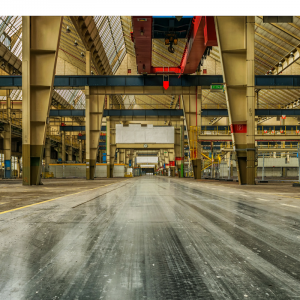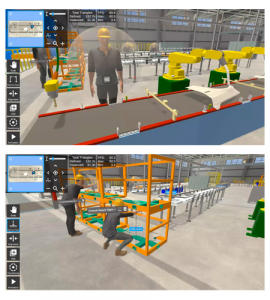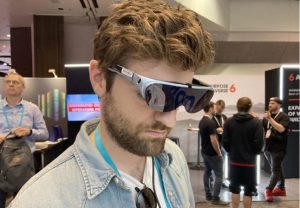We got together with Scott and Dane recently to learn more about the podcast and what they hope to accomplish with it.
AREA: Before we get into XR@Work, could you tell us what you do for a living?
Scott: I’m a Principal XR Product Manager for WestRock, a global consumer packaging manufacturing company. I’m responsible for all things XR-related for our 300 factories and our customer interactions.
Dane: I’m on the business transformation team for INVISTA, a polymer manufacturing company and subsidiary of Koch Industries. I lead XR and digital twin within INVISTA and I also lead the Republic of Science, a community of practice across Koch for XR technologies.
AREA: How did you two meet up?
Dane: We were both on a panel at AWE on real-life practitioners and Scott and I hit it off really well. There’s a fair number of people looking to get into the XR space that don’t have anybody else to reach out to, other than a vendor. Scott and I had conversations about how hard it is getting started and that’s what led to the podcast.
AREA: And when did the podcast start?
Scott: I think it was November of last year.
AREA: What’s the mission of XR at Work?
Scott: What Dane said is absolutely true. New folks starting off in Extended Reality in the workplace are being asked to do something that is still emerging, that can be confusing, and that has a lot of misinformation around it. So our goal is to do two things with XR at Work. Number one, we want to provide insight and guidance to XR practitioners in enterprise. And second, we want to foster and build a community of Extended Reality professionals that work in industrial environments – everything from oil and gas to manufacturing to automotive to logistics. The idea is to get us together to share ideas and best practices.
AREA: So your focus is really complementary to what the AREA focuses on. We’re both serving the enterprise, but XR at Work is more exclusively targeting industrial companies.
Scott: Yeah, I think that’s a fair assessment.
AREA: Where do interested people go to check out XR at Work?
Scott: We have two main places where people can connect with us. Number one is LinkedIn. We have an XR at Work company page where we invite folks to follow us. On that LinkedIn page, we will post when we have a new podcast up or we speak somewhere or we see new opportunities. The second place is YouTube.
AREA: For people who haven’t seen the podcast, what can viewers expect? What’s the range of topics discussed?
Dane: We’ve started with pragmatic discussions around core AR/VR applications and topics, such as remote assistance, guided workflows, and how to scale. More recently, we’ve started doing interviews with people who work in the industry. No offense to vendors, but our goal is to keep it community-focused around the practitioner side of the house. We want to hear from people who are already working with XR – what’s working for them, what’s not, where the field is heading, the whole metaverse concept. We’re also thinking about adding things like hardware reviews, although we want to be careful to keep it community-focused and not be beholden to somebody because they sent us a headset. That’s the key to us – to be authentic.
AREA: It sounds like the range of content really goes from helping people get started in XR to sharing tips and techniques for people who already have some proficiency. What are your long-term goals for the podcast?
Scott: In addition to the stuff Dane talked about, we’re looking at taking part in some larger events, doing a live broadcast from an event this year. We want to be seen as everyman’s XR thought leaders. We live and breathe in the factory and rugged environments, putting devices on the heads and in the hands of industrial workers. Our goal is to be seen as the go-to friendly voice in the wilderness for a community that’s trying to find real answers – not the answers they get from sizzle reels or market videos or salespeople.
AREA: I would presume you’re also hoping to learn from this – so that you can apply new ideas to your “day jobs.”
Dane: XR at Work does give us access to other people who are doing things. A lot of the stuff in the XR space is really hard. How do you manage headsets at 300 facilities like Scott’s doing? How do we go ahead as a business if our favored headset is being discontinued? There are a lot of challenges you run into as you’re managing this across a business. This gives us a chance to talk to other people who have maybe thought differently about it and we can learn from. We also like to understand what’s coming in the hardware space, so my hope is that we can be a partner to people building products to offer them insights to support product development.
Scott: We look forward to building a community and interacting more with the members of the AREA.








